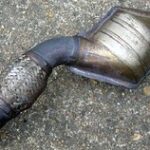AC Compressor Clutch Always Engaged (Solution)
Did you know that if you keep the AC compressor clutch engaged, it may lead to the leakage and freezing of the refrigerant? In this article, we will discuss how you can solve the issue of the AC compressor clutch always staying engaged. Let’s go!
What Causes the AC Compressor to Stay Engaged Constantly?
There are various reasons why your AC compressor clutch is always engaged. Following is a list of the possible causes.
Compressor Clutch is Seized
One of the major reasons for a constantly engaged compressor clutch is that it is seized. The clutch is responsible for allowing the compressor pulley to disengage or engage with the motor. This ensures that it only runs when required.
If the clutch is seized, the normal action of the compressor will not be able to continue. This causes the entire clutch assembly to be stationary which leads to the belt squealing, and slipping.
The Low-Pressure Switch Goes Bad
This switch is responsible for informing the car about the engaging and disengaging of the clutch. It also helps shut down the AC compressor. If the low-pressure switch goes bad, it might not be able to determine that temperature is too low. As a result, the clutch will remain engaged constantly.
You may find this switch screwed into the metal canister that is next to the compressor. Two wires extend from this switch towards the wiring harness.
Faulty Parts
Other causes for this include faulty parts such as the thermostat, compressor, and heating element. If any of these have failed or are broken, they may cause the AC compressor clutch to stay engaged.
Also read: How Much is Bentley Oil Change? (the Facts)
What Happens if the Compressor Clutch Does Not Disengage?
If the AC compressor clutch does not disengage, a lot of things will begin to go wrong with AC. Following is a list of some of the effects.
- High Cabin Temperatures:
Your cabin temperature will begin to rise unexpectedly. This happens due to compressor malfunctioning as it can no longer regulate refrigerant flow.
- Loud Noises:
The AC will begin to make weird noises on being turned on. The reason being it contains moving parts. The metal parts rub against each other to make strong and loud noises. You may also hear grinding noises as a result of this phenomenon.
- Air Switch Stops Working:
You will not be able to switch off the AC. This is because the compressor clutch is always engaged and so the compressor stays activated. This could lead to worse issues.
Solutions
Now that we have discussed the causes and effects of the AC compressor clutch staying engaged constantly, let us move on to the solutions.
- Replacing the Switch
One of the solutions is to replace the low-pressure switch. Follow the steps below to do this.
- Before removing the faulty switch, you must drain the refrigerant from the canister. This is because the switch forms a connection between the condenser and the canister. You cannot drain it into the air, make sure you get this done by a professional mechanic.
- After draining the canister, use a wrench to unscrew the switch.
- Once you have unscrewed the switch, you can pull it off and replace it with a new one.
- Use a refill kit to top up the refrigerant.
- Connect the refill canister using the same port that you used for removing the refrigerant.
- Keep filling it until the refill canister’s pressure indicator stops moving.
- Now, disconnect the canister and start up the car to ensure that the AC compressor clutch is now engaging and disengaging.
2. Replacing the Air conditioning (A/C) Refrigerant Pressure Sensor
You can also try replacing the AC refrigerant pressure sensor to solve this issue. Follow the steps below to do this.
- Begin by locating the refrigerant pressure sensor. It is usually mounted on the accumulator/rider, compressor, or AC pressure line.
- Next, use a wrench or ratchet to disconnect the negative battery cable and set it aside.
- After that you need to remove the electrical connector of the sensor.
- Now, use a wrench to loosen and unscrew the sensor.
- The next step is to screw in the brand-new sensor and tighten it up using a wrench.
- Put back the electrical connector and reinstall it.
- Finally put back the negative battery cable and tighten it.
3. Manually Interact with the AC Compressor
Follow the steps below in order to make the system manual.
- Begin by checking the compressor oil levels.
- Add plenty of oil if required. In order to do this step, you will have to check with the user manual because different brands have different ways of checking oil levels.
- Near the compressor’s front, you will find a connecting wire. Locate it and undo it.
- Attach the wire connective’s compressor facet to one side of the fused jumper wire.
- Attach its other side to the battery’s positive terminal.
- When you supply power to the compressor, you will be able to interact with it manually.
Also read: Where is Toyota Manufactured? (The Full List)
Final Verdict
It is important to ensure that the AC compressor clutch is engaging and disengaging to prevent it from freezing over. In this article, we have listed some of the causes for this issue including a seized compressor clutch, faulty low-pressure switch, and other faulty parts.
If the AC compressor clutch stays engaged it could lead to unwanted noises, high cabin temperature, and finally, the AC switch might stop working. To solve this issue, you can try replacing the switch, replacing the AC refrigerant power sensor, or just manually interacting with the compressor.
Let us know if you have any queries or comments related to this article. We will be back with more informational content.
FAQ
- Should the AC compressor clutch always stay engaged?
Answer: No, the AC compressor clutch should not stay engaged constantly. This is because if this happens, it will cause the AC switch to stop working. This will lead to further issues with the AC.
- What causes the AC clutch to engage?
Answer: When the clutch is powered, the clutch coil is energized. This produces a magnetic field that draws the clutch and causes it to engage the compressor’s shaft. This causes the AC clutch to engage.
- How long should an AC compressor clutch stay engaged?
Answer: A standard AC compressor engages and disengages the clutch about two to three times an hour. This means that an AC compressor clutch should not stay engaged for more than twenty minutes at a time.
- How do you fix a low-pressure lockout?
Answer: If the low-pressure switch circuit is open, it will send a signal to the controller which will in turn switch on the low-pressure alarm. A low-pressure lockout takes place when three consecutive alarms are triggered within an hour. Power cycling the controller will help fix the low-pressure lockout.
- Does the AC compressor pulley always spin?
Answer: Yes, the compressor pulley should keep running at all times. The magnetic clutch causes the compressor to engage and pressurize the freon. If your pulley is not spinning, you need to invest in a new belt.
- How do I know if my AC pressure switch is bad?
Answer: You need to replace the AC pressure switch if any of the following happens:
- Compressor does not turn on
- AC is not cooling the cabin
- AC is rapidly cutting on and off
References
www.startribune.com, mechanicbase.com, www.automotiveguider.com, itstillruns.com, www.yourmechanic.com






